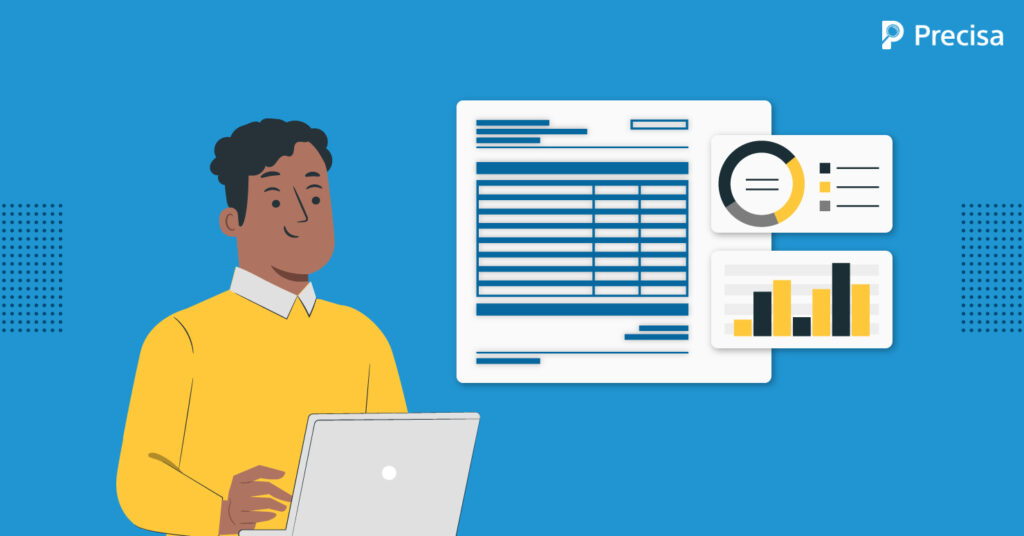How Finance and Accounting Firms Can Benefit From Bank Statement Analysis

Bank statement analysis includes a review, breakdown, and analysis. This scan is done by commercial and retail banking, investment companies, financial institutions, and accounting and auditing companies.
A bank statement analysis shows the records of all the transactions undertaken by the applicant, such as deposits, withdrawals, cash transfers, interest earned, debit card payments, bank service fees, and monthly instalments being paid.
A finance company can quickly know whether the applicant will be able to repay the loan on time by analysing the bank statement.
Accounting companies are in charge of preparing financial records, overseeing the day-to-day bookkeeping for business operations, and/or creating and preparing and filing tax forms. Accounting firms will keep track of different records and documents to manage anything from payroll to bookkeeping.
One such record or document is the bank statement. For instance, accountants can analyse the bank statement to identify any errors, file taxes, and even submit loan applications on behalf of the client.
Let’s learn more about bank statement analysis and its relevance for finance and accounting companies.
What is Bank Statement Analysis? How Can Finance Companies Benefit From It?
Bank statement analysis involves summarising cash inflows and outflows from statements and providing an overview of the financial health of a business.
A finance company reviews many documents of the loan applicant to decide the eligibility and capacity of the applicant.
The bank statement of a loan applicant is one of the factors finance companies analyse during a loan application assessment. Finance companies analyse bank statements for the following reasons:
1. Assessing the loan applicant’s repayment capacity
A positive cash balance on the borrower’s bank account statement suggests they have enough funds available. Additionally, it shows how well the applicant’s financial flow is managed.
If there is a positive cash balance for several months, it implies that the loan applicant can repay the loan back. However, the loan applicant’s poor cash holdings indicate poor financial management and reflect poorly on the applicant.
2. Checking for consistent deposits to ensure the source of timely loan repayment
Finance companies analyse a loan applicant’s bank statement to check for common deposit sources. This serves as an applicant’s reliability of income.
Large deposits in the bank statement are an indication of profitable operations and consistent revenue streams from commercial transactions.
Consistent regular deposits into the applicant’s bank account increase the possibility that the loan will be paid back on the specified date each month after it is authorised. Nevertheless, if previous deposits were made months ago, it raises serious concerns.
Unusually large and single or multiple deposits shortly before a loan application are a red flag for the finance company. The finance company should check for the origin of these funds and demand justification or explanation from the loan applicant.
3. Checking for liabilities and sizable and recurrent withdrawals, which are potential red flags
A finance company analyses the bank statement of a loan applicant to check for sizable withdrawals from the bank account. Any sizable withdrawals from the bank account should concern the finance company.
For instance, repeated withdrawals of the same amount from a bank account could signify a hidden loan, credit card payments, or another regular obligation that needs to be fulfilled.
Business obligations are deducted from the average monthly profit to arrive at the final amount. Any recurring expense that is met each month is characterised as a liability. Therefore, a business’s bank statements reflect its liabilities such as office leasing, hire purchase, automobile loans, etc.
4. Checking for cash overdraft or any other signs indicating the loan applicant’s poor financial capacity
A borrower may withdraw more money than their account has available at a time by using a bank’s cash overdraft service. Finance companies should be concerned if they see such overdrafts on the applicant’s bank statement. It means that the borrower has difficulties managing finances and will find it challenging to repay the loan.
5. Checking for bounced cheques, return charges, and penal transactions
Cheques play an essential role in any financial system. A cheque bounce occurs when the processing of a disbursed cheque is unsuccessful for several reasons.
Lack of funds in the issuer’s account is one of the most common reasons for a bounced cheque. In addition to levying charges, these cheques are rejected or declared invalid by the banks.
Cheque bounces indicate a company’s financial health. A cheque will bounce if there are insufficient funds to honour the cheque. This implies the poor credibility of the loan applicant.
How Accounting Companies Can Benefit from Bank Statement Analysis
Accounting companies provide a wide range of services that aid in keeping business owners financially organised.
The primary services accounting firms provide preparing and reviewing financial statements, tax work, and consulting and advice on accounting systems. These companies use bank statement analysis for the following:
1. Filing taxes
Accounting companies must collect documents to ensure accuracy while filing a company’s or business’ tax returns. This includes the bank statements. The bank statements are acceptable supporting evidence for business tax forms. In addition, if the business has been audited, the bank statements will prove that the tax returns are accurate.
2. Budgeting for the business
Reviewing the bank statement will show the pattern of expenses/revenue that may stand out. Bank statement analysis will show if there are unnecessary and high-cost expenses or an untapped source of consistent revenue/income.
Accounting companies can use the information in the bank statement to simplify preparing the company’s budget. For example, based on the previous transactions, a business can estimate the subsequent transactions.
3. Finding errors and unauthorised transactions
Accounting companies can identify mistakes and unauthorised transactions by going through bank statements. It’s also possible to identify reporting errors or fraudulent transactions.
By regularly assessing the bank statement and looking for inconsistencies, the accounting companies can report such discrepancies to the bank.
4. Reconciling bank statements
The bank statement can be used to check the accuracy of the accounting records. This process is known as bank statement reconciliation. Inconsistencies can be identified by comparing the bank statement with the accounting records.
Benefits of Bank Statement Analysis Software
When performing bank statement analysis, financial data is extracted from a statement, and insights are drawn from them based on the state of account activity.
A bank statement analysis software seeks to map account cash inflows and outflows, penalties, vendor payments, and defaults (if any). It organises and summarises the account activities of the business/individual after parsing data from scanned images or PDF documents.
With the aid of a bank statement analysis software, orgs can do away with time-consuming manual verifications, automate the detection of patterns in income and expenditure, and produce a customised output that results in segregated data about balances, recurring income and expenditure, bounced checks, etc., which establishes the borrower’s precise financial health and makes it simpler for them to make decisions.
By processing bank statements with intelligent OCR, it is possible to detect instances of financial fraud and patterns in recurrent transactions.
Statement analysis models cross-check transactions shown on the business ledger versus what is reflected in account statements. If the information is accurate, the accounts are confirmed and authenticated, and mismatched amounts can be used to identify fraudulent activity in accounts.
The Bottom Line
The Bank Statement Analysis software makes analysis error-free and does away with human labour requirements. As a result, many different businesses such as finance companies, accounting and auditing firms, investment companies, banks, NBFCs, etc., benefit from this technology.
However, bank statement analysis software plays a crucial role in determining creditworthiness; hence, it is highly beneficial for the financial services sector.
Precisa is a tool for bank statement analysis that carefully examines every last detail to make decision-making easier for finance and accounting firms. It assists lenders in evaluating the borrower’s reliability and making a well-informed choice. Call now for a free demo!




